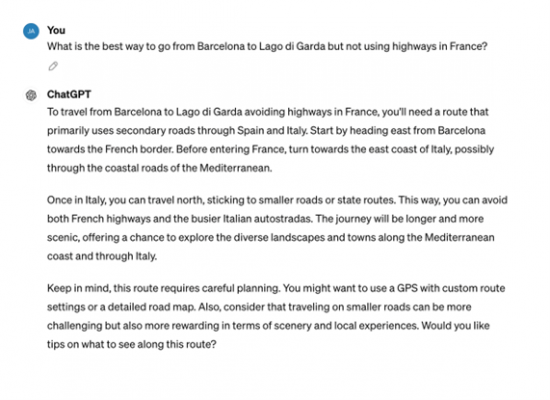At our Annual General Meeting in April, we had the privilege of hosting three guest speakers. Among them was Jasna Suhadolc from Actuado, a digital marketing agency specialising in inbound marketing and sales services. Jasna’s presentation on artificial intelligence (AI) painted a vivid picture of how AI is revolutionising industries and driving innovation across all sectors.

From a futuristic concept to a game-changing technology
What is AI? Artificial intelligence, a field of computer science, focuses on creating systems that are capable of performing tasks that typically require human intelligence. The aim of AI is to create programs and devices that can collect data, learn from it, and make decisions and perform tasks independently. The term artificial intelligence was first coined during the “Dartmouth Summer Research Project on Artificial Intelligence”, a 1956 workshop with the brightest minds in computer science at the time, which is now widely recognised as the birthplace of AI as a field of research. Since then, AI has evolved considerably – from early experimentation to sophisticated applications that are now an integral part of our daily lives.
Few technologies have been adopted as quickly as AI. An impressive example is Chat GPT, which reached 100 million monthly users within just two months of its release (by comparison, TikTok needed 9 months to reach the same milestone). The appeal of AI lies in its ability to increase efficiency, automate complex tasks, provide deep data insights, personalise experiences and drive innovation.

AI creates value across sectors
Generative AI creates value by producing novel outputs in various forms. According to a survey by the Deloitte AI Institute, text generation leads the way with an 83% adoption rate, followed by code generation with 62%, audio with 56%, image with 55%, video with 36% and 3D model generation with 26%.
In addition, the HubSpot Blog’s State of AI Report emphasises the time-saving benefits of AI and automation: employees save an average of 2.5 hours per day. Marketing experts save more than 3 hours per piece of content, sales professionals save more than 2 hours daily, and service representatives save over 2 hours each day.

The versatility of AI can be seen in a wide range of practical applications, from complex to simpler tasks. AI tools such as ChatGPT, Gemini, Copy.ai, Canva and Microsoft’s Copilot can be used to write articles, generate ideas for blog posts, create guides and tutorials, summarise large documents, design images and presentations, translate text, images and videos, and even structure data in Excel. These capabilities make AI an invaluable tool for increasing productivity and creativity in both professional and personal contexts.

The applications of AI, of course, go far beyond marketing. A compelling example Jasna presented shows the potential of AI to make a positive contribution to society: Google’s Alphabet X is working with the US National Guard to provide AI tools that can quickly analyse images of disaster zones. This capability enables a faster and more effective response to natural disasters and highlights the potential of AI as an important tool for humanitarian efforts.

Navigating ethical challenges
As AI technology advances, so do the ethical considerations associated with its use. The presentation highlighted issues such as scams using AI-generated deepfakes, harmful AI-generated content to influence voters in an election year or the increasing pressure women feel to alter their appearance based on what they see online, even if they know it is fake or AI-generated. These challenges underscore the importance of ethical guidelines to ensure the responsible use of AI, such as UNESCO’s Ethics of Artificial Intelligence.
Practical tips for leveraging AI tools
Among the practical advice for the effective use of AI tools, Jasna emphasised the following:
- clarity in the instructions to AI tools (“the result depends on the quality of the instructions, so make sure the instructions are understandable, clear and specific”),
- avoiding the entry of confidential data,
- and taking responsibility for the final content produced by AI (“always remember that AI can make mistakes”).
AI should be seen as a tool that supports, rather than replaces, human creativity, decision-making and judgement. Review and customisation of AI-generated content is critical to ensure it meets the desired standards and aligns with business objectives, while transparent and responsible use of AI is essential to build trust, uphold ethical standards and ensure that its application has a positive impact on both society and organisations.
________________________________________________
For more practical tips on how to use AI for LinkedIn, read our previous articles:
